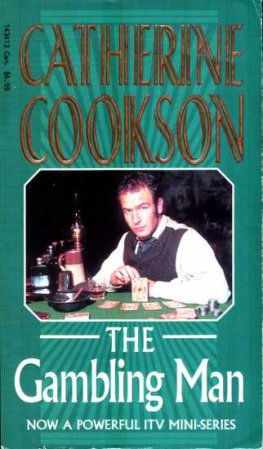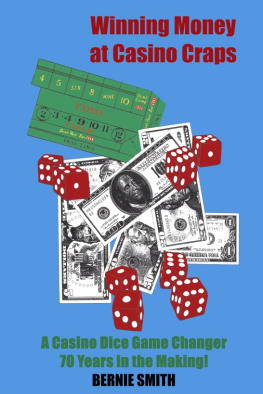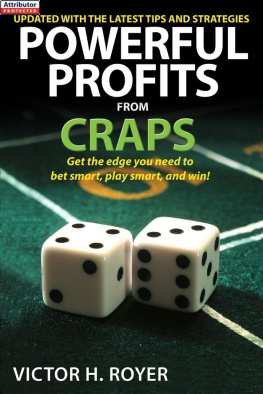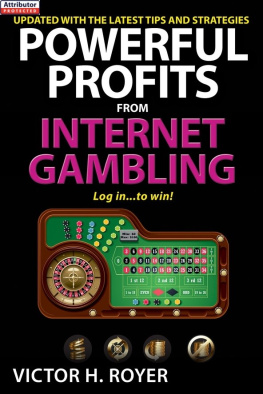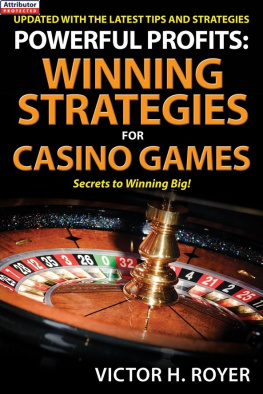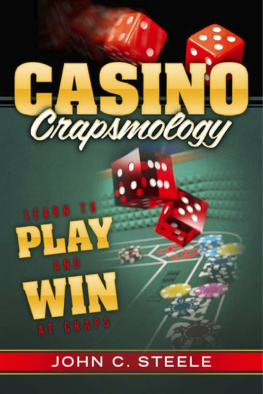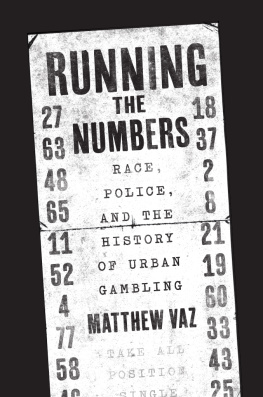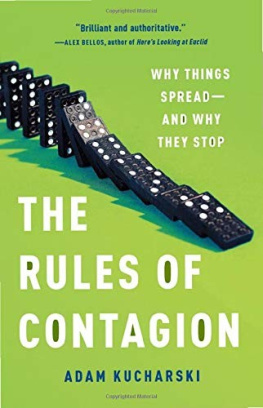

Copyright 2016 by Adam Kucharski
Published by Basic Books,
A Member of the Perseus Books Group
All rights reserved. Printed in the United States of America. No part of this book may be reproduced in any manner whatsoever without written permission except in the case of brief quotations embodied in critical articles and reviews. For information, contact Basic Books, 250 West 57th Street, New York, NY 10107.
Books published by Basic Books are available at special discounts for bulk purchases in the United States by corporations, institutions, and other organizations. For more information, please contact the Special Markets Department at the Perseus Books Group, 2300 Chestnut Street, Suite 200, Philadelphia, PA 19103, or call (800) 810-4145, ext. 5000, or e-mail .
Designed by Linda Mark
Library of Congress Cataloging-in-Publication Data
Kucharski, Adam (Mathematician)
The perfect bet: how science and math are taking the luck out of gambling / Adam Kucharski.
pages cm
Includes bibliographical references and index.
ISBN 978-0-465-09859-0 (ebook)
1. Games of chance (Mathematics) 2. Gambling. 3. Gambling systems. 4. Probabilities. I. Title.
QA271.K83 2015
519.27dc23
2015034255
10 9 8 7 6 5 4 3 2 1
For my parents
Luck is probability taken personally.
CHIP DENMAN
CONTENTS
I N JUNE 2009, A BRITISH NEWSPAPER TOLD THE STORY OF ELLIOTT Short, a former financial trader whod made over 20 million betting on horse races. He had a chauffeur-driven Mercedes, kept an office in the exclusive Knightsbridge district of London, and regularly ran up huge bar tabs in the citys best clubs. According to the article, Shorts winning strategy was simple: always bet against the favorite. Because the highest-rated horse doesnt always win, it was possible to make a fortune using this approach. Thanks to his system, Short had made huge profits on some of Britains best-known races, from 1.5 million at Cheltenham Festival to 3 million at Royal Ascot.
There was just one problem: the story wasnt entirely true. The profitable bets that Short claimed to have made at Cheltenham and Ascot had never been placed. Having persuaded investors to pour hundreds of thousands of pounds into his betting system, hed spent much of the money on holidays and nights out. Eventually, his investors started asking questions, and Short was arrested. When the case went to trial in April 2013, Short was found guilty of nine counts of fraud and was sentenced to five years in prison.
It might seem surprising that so many people were taken in. But there is something seductive about the idea of a perfect betting system. Stories of successful gambling go against the notion that casinos and bookmakers are unbeatable. They imply that there are flaws in games of chance, and that these can be exploited by anyone sharp enough to spot them. Randomness can be reasoned with, and fortune controlled by formulae. The idea is so appealing that, for as long as many games have existed, people have tried to find ways to beat them. Yet the search for the perfect bet has not only influenced gamblers. Throughout history, wagers have transformed our entire understanding of luck.
WHEN THE FIRST ROULETTE wheels appeared in Parisian casinos in the eighteenth century, it did not take long for players to conjure up new betting systems. Most of the strategies came with attractive names, and atrocious success rates. One was called the martingale. The system had evolved from a tactic used in bar games and was rumored to be foolproof. As its reputation spread, it became incredibly popular among local players.
The martingale involved placing bets on black or red. The color didnt matter; it was the stake that was important. Rather than betting the same amount each time, a player would double up after a loss. When players eventually picked the right color, they would therefore win back all the money lost on earlier bets plus a profit equal to their initial stake.
At first glance, the system seemed flawless. But it had one major drawback: sometimes the required bet size would increase far beyond what the gambler, or even casino, could afford. Following the martingale might earn a player a small profit initially, but in the long run solvency would always get in the way of strategy. Although the martingale might have been popular, it was a tactic that no one could afford to carry out successfully. The martingale is as elusive as the soul, as writer Alexandre Dumas put it.
One of the reasons the strategy lured in so many playersand continues to do sois that mathematically it appears perfect. Write down the amount youve bet and the amount you could win, and youll always come out on top. The calculations have a flaw only when they meet reality. On paper, the martingale seems to work fine; in practical terms, its hopeless.
When it comes to gambling, understanding the theory behind a game can make all the difference. But what if that theory hasnt been invented yet? During the Renaissance, Gerolamo Cardano was an avid gambler. Having frittered away his inheritance, he decided to make his fortune by betting. For Cardano, this meant measuring how likely random events were.
Probability as we know it did not exist in Cardanos era. There were no laws about chance events, no rules about how likely something was. If someone rolled two sixes while playing dice, it was simply good luck. For many games, nobody knew precisely what a fair wager should be.
Cardano was one of the first to spot that such games could be analyzed mathematically. He realized that navigating the world of chance meant understanding where its boundaries lay. He would therefore look at the collection of all possible outcomes, and then home in on the ones that were of interest. Although two dice could land in thirty-six different arrangements, there was only one way to get two sixes. He also worked out how to deal with multiple random events, deriving Cardanos formula to calculate the correct odds for repeated games.
Cardanos intellect was not his only weapon in card games. He also carried a long knife, known as a poniard, and was not opposed to using it. In 1525, he was playing cards in Venice and realized his opponent was cheating. When I observed that the cards were marked, I impetuously slashed his face with my poniard, Cardano said, though not deeply.
In the decades that followed, other researchers chipped away at the mysteries of probability, too. At the request of a group of Italian nobles, Galileo investigated why some combinations of dice faces appeared more often than others. Astronomer Johannes Kepler also took time off from studying planetary motion to write a short piece on the theory of dice and gambling.
The science of chance blossomed in 1654 as the result of a gambling question posed by a French writer named Antoine Gombaud. He had been puzzled by the following dice problem. Which is more likely: throwing a single six in four rolls of a single die, or throwing double sixes in twenty-four rolls of two dice? Gombaud believed the two events would occur equally often but could not prove it. He wrote to his mathematician friend Blaise Pascal, asking if this was indeed the case.
To tackle the dice problem, Pascal enlisted the help of Pierre de Fermat, a wealthy lawyer and fellow mathematician. Together, they built on Cardanos earlier work on randomness, gradually pinning down the basic laws of probability. Many of the new concepts would become central to mathematical theory. Among other things, Pascal and Fermat defined the expected value of a game, which measured how profitable it would be on average if played repeatedly. Their research showed that Gombaud had been wrong: he was more likely to get a six in four rolls of one die than double sixes in twenty-four rolls of two dice. Still, thanks to Gombauds gambling puzzle, mathematics had gained an entirely new set of ideas. According to mathematician Richard Epstein, Gamblers can rightly claim to be the godfathers of probability theory.
Next page

